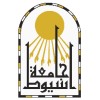Intralesional Candidal Antigen Versus Intralesional Zinc Sulphate in Treatment of Cutaneous Warts
Warts

About this trial
This is an interventional treatment trial for Warts
Eligibility Criteria
Inclusion Criteria:- patients with ages ranging from 10 to 40 years with cutaneous common or planter wart ,
- or were either resistant to treatment
- or had relapsed at least once after treatment with any of the tissue-destructive modalities
Exclusion Criteria:.- Patients with any evidence of immunosuppressant,
- eczematous skin disorder,
- those with any history of hypersensitivity to Candida albicans antigen,
- pregnant or lactating women,
- and those who received any wart treatment 1 month before the start of the study will be excluded from the study
Sites / Locations
- Assiut University HospitalRecruiting
Arms of the Study
Arm 1
Arm 2
Experimental
Active Comparator
study group
control group
The first group will receive Intralesional injection of Candidal antigen with a dose of (0.1ml -0.3ml) by insulin syringe in the largest wart at the first visit.( Only those patients who showed a positive response to the Candida test antigen).I njections will be repeated for all patients into the same lesion every 3 weeks for three treatment sessions. Follow up for next six months for any recurrences. Storage: A 1ml multidose vial of candidal antigen (Candin) which is an intradermal test antigen, stored between 2c-8c.
The second group will receive an IL injection of 2%Zn sulfate with a dose of (0.1ml-0.3ml) by insulin syringe ,in the largest one .the wart is injected with the solution till blanching or bleb formation. Subcutaneous injections and acral parts such as fingers and toes will be avoided, as it may cause vascular necrosis [19]. Injections will be repeated for all patients into the same lesion every 2 weeks for three treatment sessions.Follow up for next six months for any recurrences. Preparation of 2% zinc sulfate: A measure of 2g. of zinc sulfate powder is to be dissolved in 100 ml of sterile distilled water and autoclaved at 95c for 20 min(20).
Outcomes
Primary Outcome Measures
Secondary Outcome Measures
Full Information
1. Study Identification
2. Study Status
3. Sponsor/Collaborators
4. Oversight
5. Study Description
6. Conditions and Keywords
7. Study Design
8. Arms, Groups, and Interventions
10. Eligibility
12. IPD Sharing Statement
Learn more about this trial
